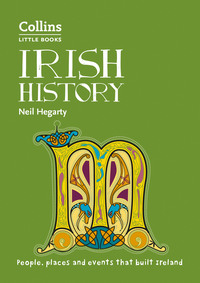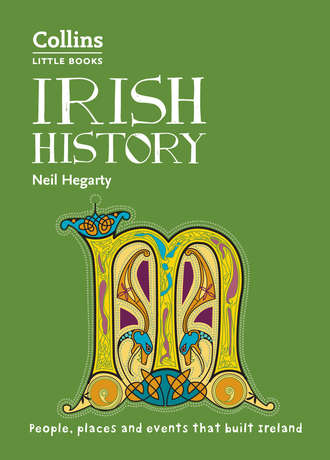
Полная версия
Irish History: People, places and events that built Ireland

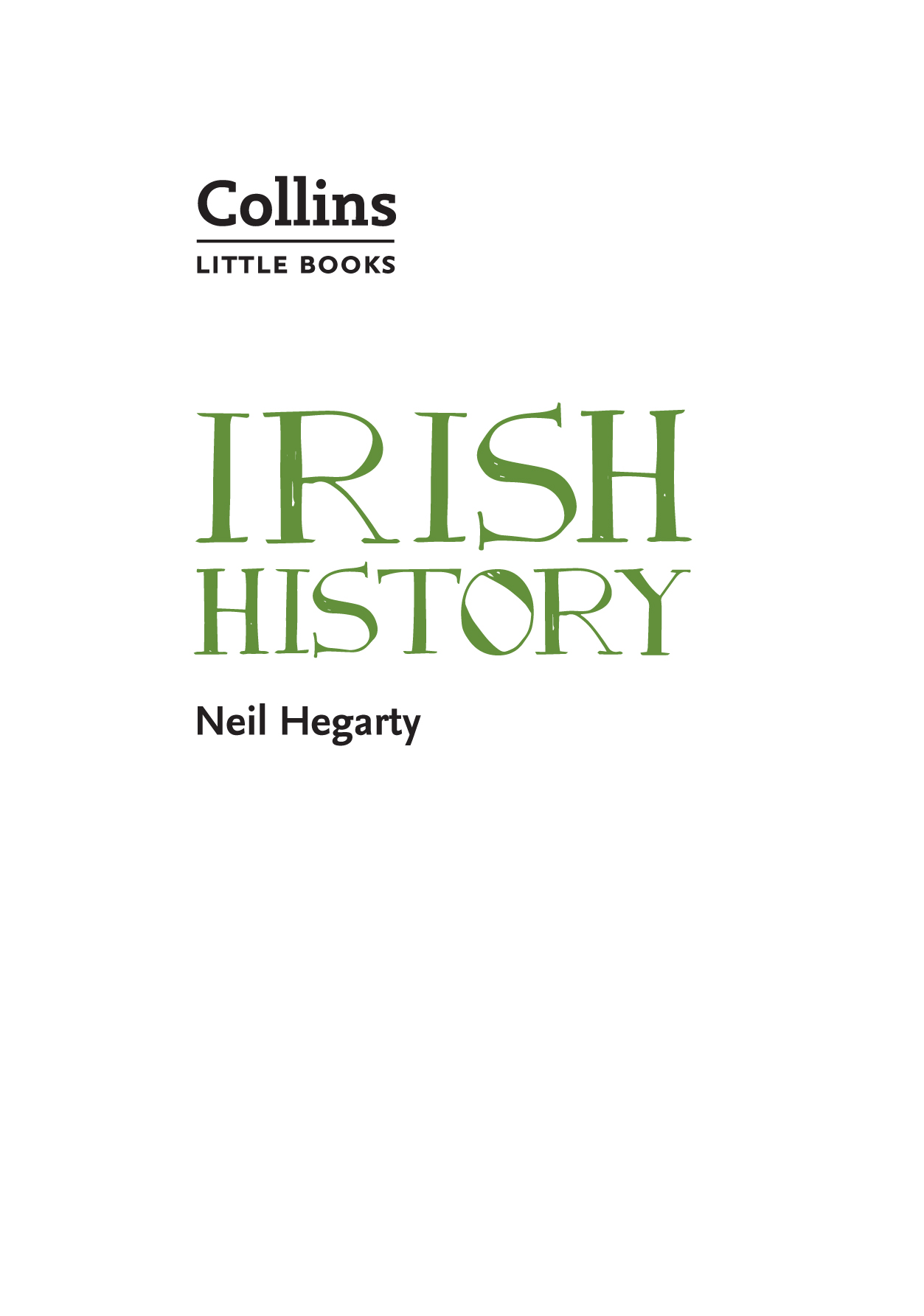
Copyright
HarperCollins Publishers
Westerhill Road
Bishopbriggs
Glasgow
G64 2QT
First Edition 2020
© HarperCollins Publishers 2020
Collins® is a registered trademark of HarperCollins Publishers Limited
www.collins.co.uk
A catalogue record for this book is available from the British Library
Author: Neil Hegarty
All rights reserved under International and Pan-American Copyright Conventions. By payment of the required fees, you have been granted the non-exclusive, non-transferable right to access and read the text of this e-book on screen. No part of this text may be reproduced, transmitted, downloaded, decompiled, reverse engineered, or stored in or introduced into any information storage and retrieval system, in any form or by any means, whether electronic or mechanical, now known or hereafter invented, without the express written permission of HarperCollins.
HarperCollins does not warrant that www.collins.co.uk or any other website mentioned in this title will be provided uninterrupted, that any website will be error free, that defects will be corrected, or that the website or the server that makes it available are free of viruses or bugs. For full terms and conditions please refer to the site terms provided on the website.
Print Edition ISBN 978-0-00-834013-1
eBook Edition © October 2019 ISBN 978-0-00-837919-3
Version: 2019-11-08
Contents
Cover
Title Page
Copyright
Introduction
Irish History
Mesolithic Ireland
The Céide Fields
Newgrange
History and Myth: Cúchulainn
The Celts
Dún Aonghasa
The Broighter Hoard
Hibernia and Rome
Before Christianity
Palladius: the ‘first Patrick’
Patrick: myth and reality
Pilgrimage
‘Saints and Scholars’
Glendalough
Dál Riata
Colm Cille
Columbanus in Europe
The Irish language
Skellig Michael
Illumination
‘Heathen men’
The Viking presence
Dublin
Brian Boru
Laudabiliter
Invasion
Giraldus Cambrensis
A royal visit
Dublin Castle
The Lordship of Ireland
The ‘Remonstrance of the Princes’
The Bruce Invasion
The Statutes of Kilkenny
Reconquest
Surrender and Regrant
‘Great Terror’
Granuaile
Trinity College Dublin
Kinsale
The Flight of the Earls
The Wild Geese
The Plantation of Ulster
The Walls of Derry
1641
Cromwell
A ‘deluded and seduced people’
The Act of Settlement
The Big House
The Siege of Derry
The Battle of the Boyne
The Penal Laws
Marsh’s Library
The Royal Hospital
Georgian Dublin
Swift
The Irish Parliament
Irish Presbyterianism in America
The United Irishmen
1798
The Act of Union
Maria Edgeworth
Wellington
Moore’s Melodies
Irish Lights
Emancipation
O’Connell and Repeal
The Great Hunger
The Famine and the Future
The Irish Diaspora
The Fenians
The Church Ascendant
The ‘Irish Question’
The Revival
The Gaelic Athletic Association
The Abbey Theatre
Yeats and Joyce
Industrial Ulster
Titanic
The Ulster Covenant
A World at War
The Easter Rising
Collins and de Valera
The War of Independence
The first ‘Bloody Sunday’
The Treaty
Constance Markievicz
Civil War
The Irish Border
In Northern Ireland
In the Free State
De Valera’s Ireland
The Jews of Ireland
The Treaty Ports
The ‘Emergency’
Northern Ireland at War
Elizabeth Bowen
The ‘Mother and Child’ Scheme
The Islands of Ireland
Edna O’Brien
The Road to the Troubles
The Troubles
The Second ‘Bloody Sunday’
In Europe
The Presidents of Ireland
Corncrake
Catholicism and Ireland
The ‘X Case’
Church scandals
Incarceration
The Good Friday Agreement
Imperfect peace
Two Nobels
A Tiger and a Bail-Out
Two Referendums
Brexit and the future
Index
Photo credits
About the author
About the Publisher
Introduction
From the very beginnings of its history, the island of Ireland has been open to the influence of the surrounding world. The seas that separate Ireland from its European neighbours might seem, on the face of it, to act as barriers, dividing the inhabitants of Ireland from international affairs. In fact, the opposite has always been the case, for the seas have acted as highways, bringing foreign influences, goods and traffic, travellers, wanderers, and invaders to Irish shores.
This, then, is an island with a history woven into a much larger tapestry – and the pages of this book demonstrate this international dimension in Irish history time and again. The first inhabitants of Ireland arrived from abroad, as the ice sheets retreated and the seas rose, and they have continued to arrive from overseas. The work of acculturation – of newcomers putting down roots in a new land, trading, farming, connecting in human, cultural, social, and economic ways – can be seen consistently at play, and this process complicates the narratives of invasion and conquest that form such dominant themes in Irish history.
Of course, armed invasions have indeed recurred throughout Irish history and they were ferocious in nature. In their wake came death, starvation, and dispossession, with the poor, the old, women, and children bearing the brunt of the violence, and no history worth the name can sidestep such brutal facts. This book traces the nature and character of such episodes, some of which are better known than others. The incursion of Scottish armies into Ireland brought ruin to the land, but this fourteenth-century episode is less well remembered than the Cromwellian invasion of the seventeenth century, which devastated Irish society, causing the deaths of hundreds of thousands of Irish men, women, and children. The figure of Oliver Cromwell himself is remembered in England as a proto-democrat, but in Ireland his name is associated with gruesome violence and genocide. Such episodes are worth dwelling on, for they remind us that if a history is to be truly meaningful, it must illuminate the experience of the defeated, as well as that of the victor.
Stubborn political dogma and wilful blindness have also played malignant roles in the story of Ireland, and this is nowhere better exemplified than in the events of the Great Famine of the nineteenth century. This is Ireland’s defining social, economic, emotional, and demographic fracture. It offers a dreadful reminder that violence and trauma in history take many forms, and leave a mark upon society for generations to come.
This book attends to the complexity of Ireland past and present: to its writers and its architecture, its landscape and natural world, its religions, artefacts, and sports, and to the imprint and lasting influence of the ancient Irish language. It traces the stories of its politics and its divisions. One such division – the political border that runs through the island today – has seldom been out of the headlines in recent years. The violence it has engendered and the political tensions that surround it are examined too in all their fraught complexity, together with the facts surrounding the creation of two Irish states in the modern era, and the trajectories of their society and politics. The nature of the peace process in Northern Ireland, the progressive politics that have emerged in a Republic of Ireland that was once a bastion of Catholicism in Europe: these issues and more are explored – all with an eye on a future that, in an age of Brexit, is remarkably, startlingly plastic.
Ireland is, in demographic terms, a young country, with an eye on the future: it has embraced modernity and is open to European and global influences. And yet, it remains a singular place, and mindful of the past. This Little Book illuminates many elements in this past and, in the process, it offers a reminder that, in understanding our history, we can also better understand our present world.
Mesolithic Ireland
The human story of Ireland begins around 13,000 years ago, with the retreat of the glaciers that had covered the country during the Ice Age, followed by a slow rise in sea levels. Meadows and then scant woods of juniper and birch spread across the land, followed as the centuries passed by dense broadleaf forests. The land that became Ireland was possibly not yet an island, for land-bridges may have offered paths from Britain. However, it is clear that by 7000 BC human hunter-gatherers had crossed by land or sea to establish a permanent presence in Ireland, felling trees, spreading along the river valleys, and hewing out a livelihood amid populations of wolves, bears, boar, and smaller mammals. They dwelt in skin-roofed huts. Excavations of early settlements – on the banks of the river Bann at Mountsandel in County Derry, for example – reveal eloquent remains in the form of charcoal left by fires, flint worked into axe-heads, animal bones, and the ubiquitous shells of hazelnuts that were a mainstay of the Mesolithic diet. The population waxed and waned as the climate warmed and cooled: by 4000 BC, it is estimated that there were fewer than 10,000 people living in Ireland.
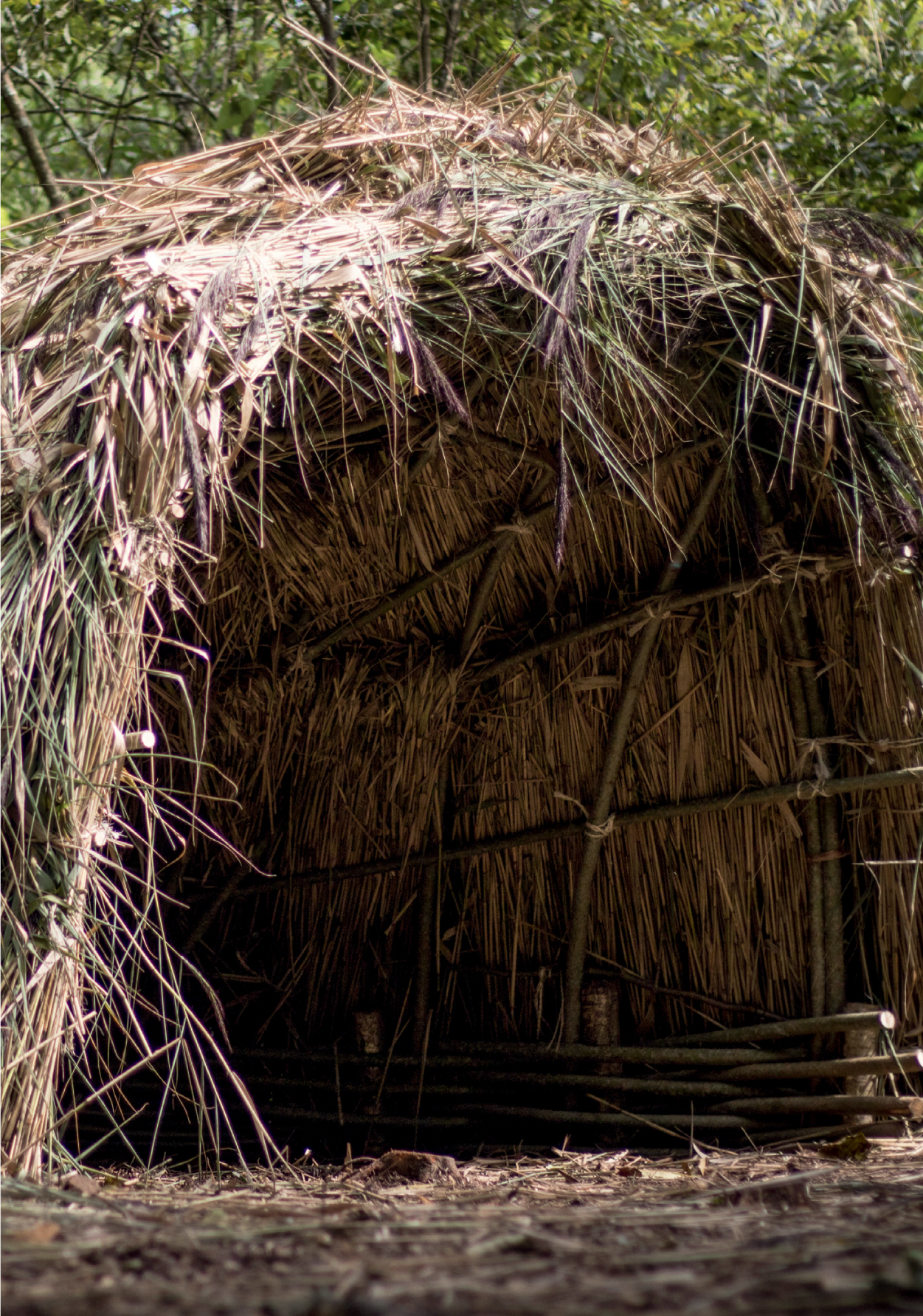
The Céide Fields
On the windswept sea cliffs of north County Mayo lie the Céide Fields: a hypnotizing jigsaw of tiny fields that date from the Neolithic period, which began c. 3500 BC. Exploration of the area commenced in the 1930s, when areas of the blanket bog covering the landscape was excavated, to reveal a tracery of stone walls – clearly the work of ancient hands. These fields and walls offered the first hard evidence for the existence of early farming in Ireland: indeed, the Céide Fields represent the oldest extant field systems to be found anywhere in the world. They demonstrate that the sparse population of hunter-gatherers that spread across Ireland during the Mesolithic period had now become agriculturalists. Possibly they crossed using a still surviving land-bridge between Britain and Ireland, or by sea in light skin boats, bringing with them domesticated flocks of sheep, goats, and cows. The dense ancient forests vanished, replaced by pasture, and by arable fields in which were sown primitive strains of barley and wheat. Larger and more established settlements developed, with more elaborate dwellings of wood, wattle and daub, and thatch.
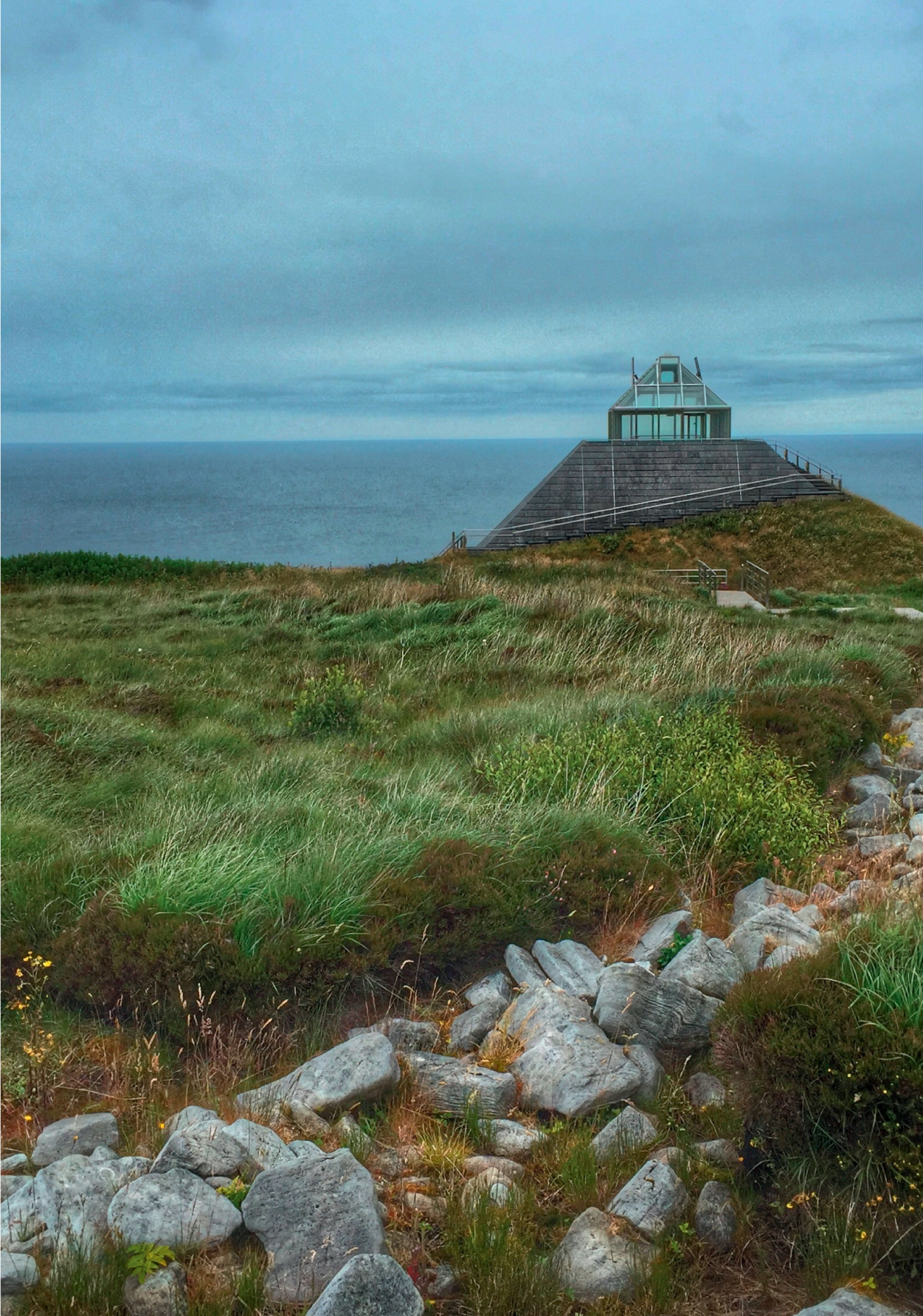
Newgrange
In the fertile lowlands of County Meath rises the spectacular Neolithic site at Newgrange. This great monument was established c. 3200 BC, making it considerably more venerable than Stonehenge or the Pyramids, and it takes the form of a vast domed mound enclosing passages and inner chambers, with walls adorned by a range of carvings. Evidently, the structure was designed according to strict astronomical calculations: today, on the winter solstice, the first rays of the rising sun enter the mound and flood the innermost chamber with light. Newgrange is one element in Brú na Bóinne, a complex of Neolithic sites ranged along the Boyne river valley. These sites in turn are just some among many Neolithic monuments – such as the Poulnabrone dolmen in County Clare and Carrowmore in County Sligo – that still survive in Ireland. Each such site shares many similarities with other Neolithic monuments scattered across Europe, suggesting close connections between a range of dispersed civilizations. Newgrange is bound up with Irish myth but its essential function is still unknown. As such, it exemplified the ability of ancient humans in Ireland to leave lasting, remarkable, but essentially mysterious imprints on the landscape.
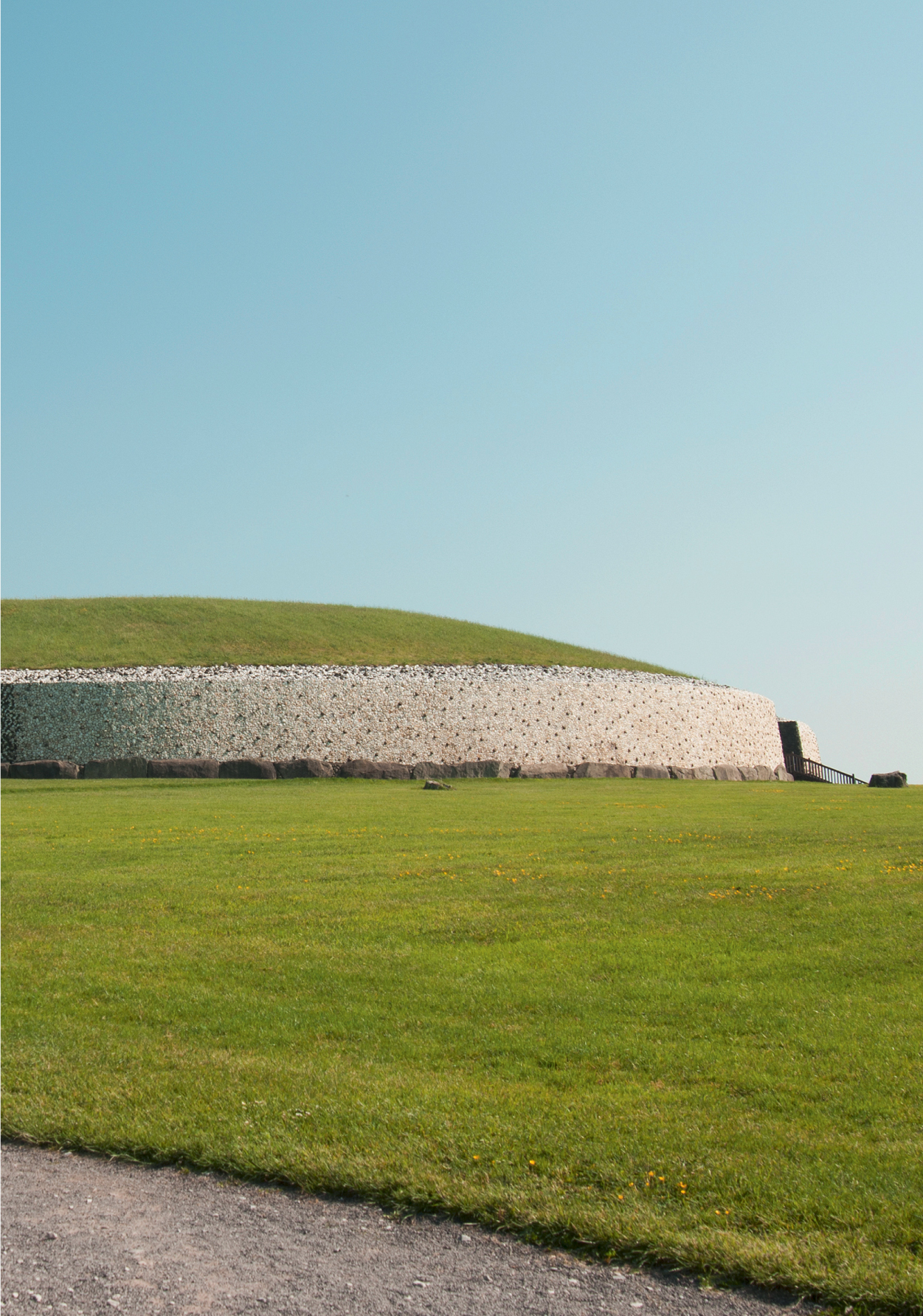
History and Myth: Cúchulainn
The great hero and warrior Cúchulainn is a central figure of ancient Irish mythology, and is particularly connected with the northern province of Ulster. In one of many versions of the story, he was conceived at Newgrange as the son and incarnation of the powerful god Lug and of Deichtine, daughter of the king of Ulster. Stories of Cúchulainn’s talents in love and war are legion: one such tale, that of the Cattle Raid of Cooley, sees the hero pitted against Medb (Maeve), the strong-willed and ambitious Queen of the western province of Connacht, whose armies invade Ulster to seize its prize stud bull. Cúchulainn wins the day by defeating one enemy warrior after another in single combat, in a display of might that lasts for many months. By turns capable of ferocious anger and of great gentleness and sensitivity, Cúchulainn has been invoked in support of a range of groups over the years. To Irish nationalists, for example, he stands for heroic independence, power, stamina, and ferocity in the face of adversity; equally, he has been claimed by unionists as a symbolic bulwark against invasion from the south.
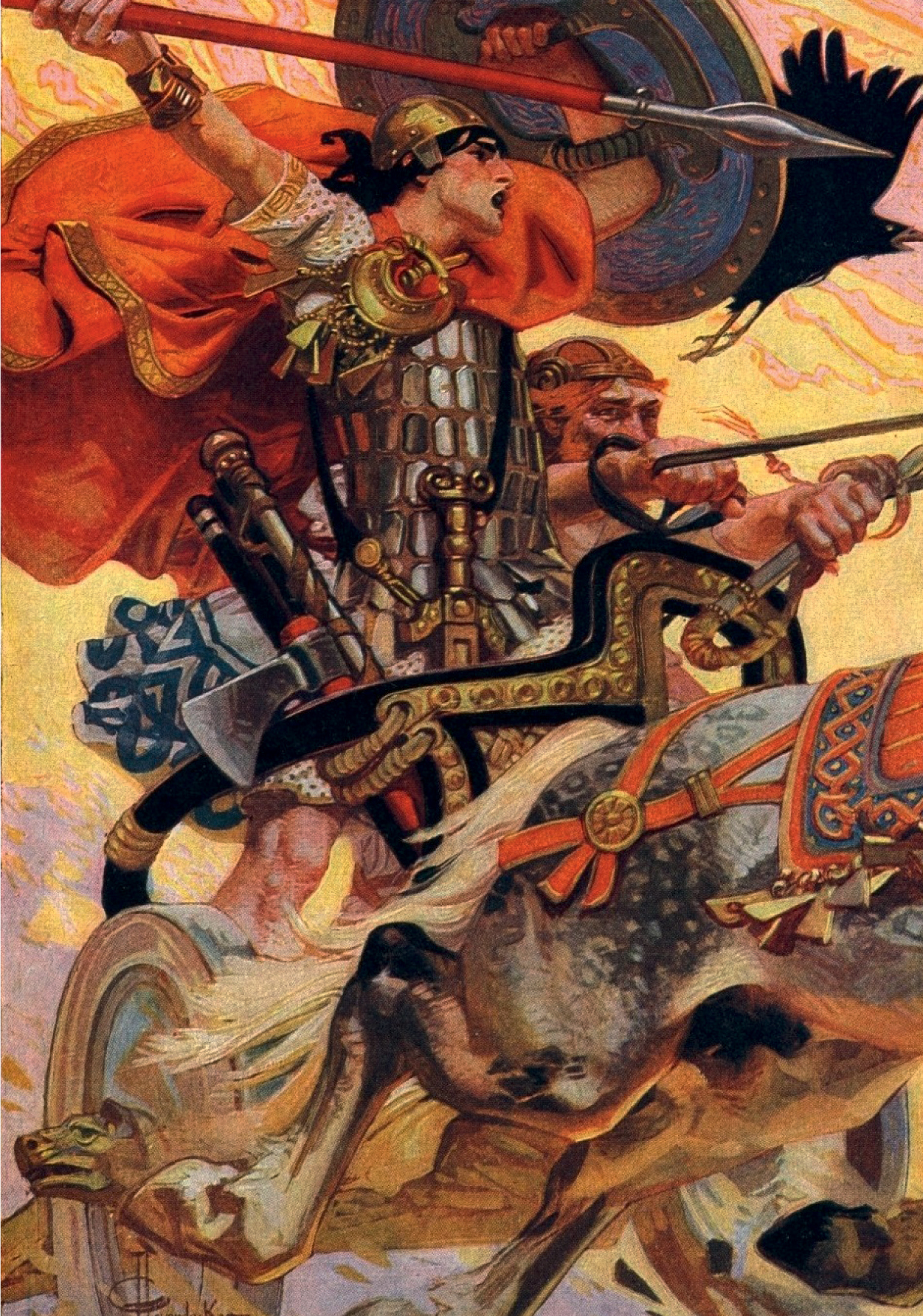
The Celts
Ireland is famously a ‘Celtic’ nation, sharing strong cultural and linguistic traits with other ‘Celtic’ societies in Scotland, Wales, Cornwall, Brittany, and the Isle of Man – but what does ‘Celtic’ actually mean? The term is a vexed one: it first entered common use during a period of rising nationalism in nineteenth-century Ireland and became a useful means to distinguish Irish culture from that of ‘Anglo-Saxon’ England. As for the facts, it was long claimed that Ireland was occupied by waves of Celtic invaders arriving from central Europe around 500 BC, who supplanted the existing culture that had developed in the course of the preceding centuries. In addition, legend speaks of a period in deepest antiquity, when the ‘Milesians’ sailed to Ireland from Iberia to do battle with the Tuatha dé Danaan, the existing inhabitants of the land. But recent research reveals no such invasion: instead, newcomers arrived steadily from across the sea, acclimatizing and adapting to life in an already populated land, and adding their experience to the cultural mix – but, crucially, not erasing the civilization that had gone before. ‘Celtic’, then, is a useful mark of cultural identity, rather than a concept rooted firmly in historical fact.
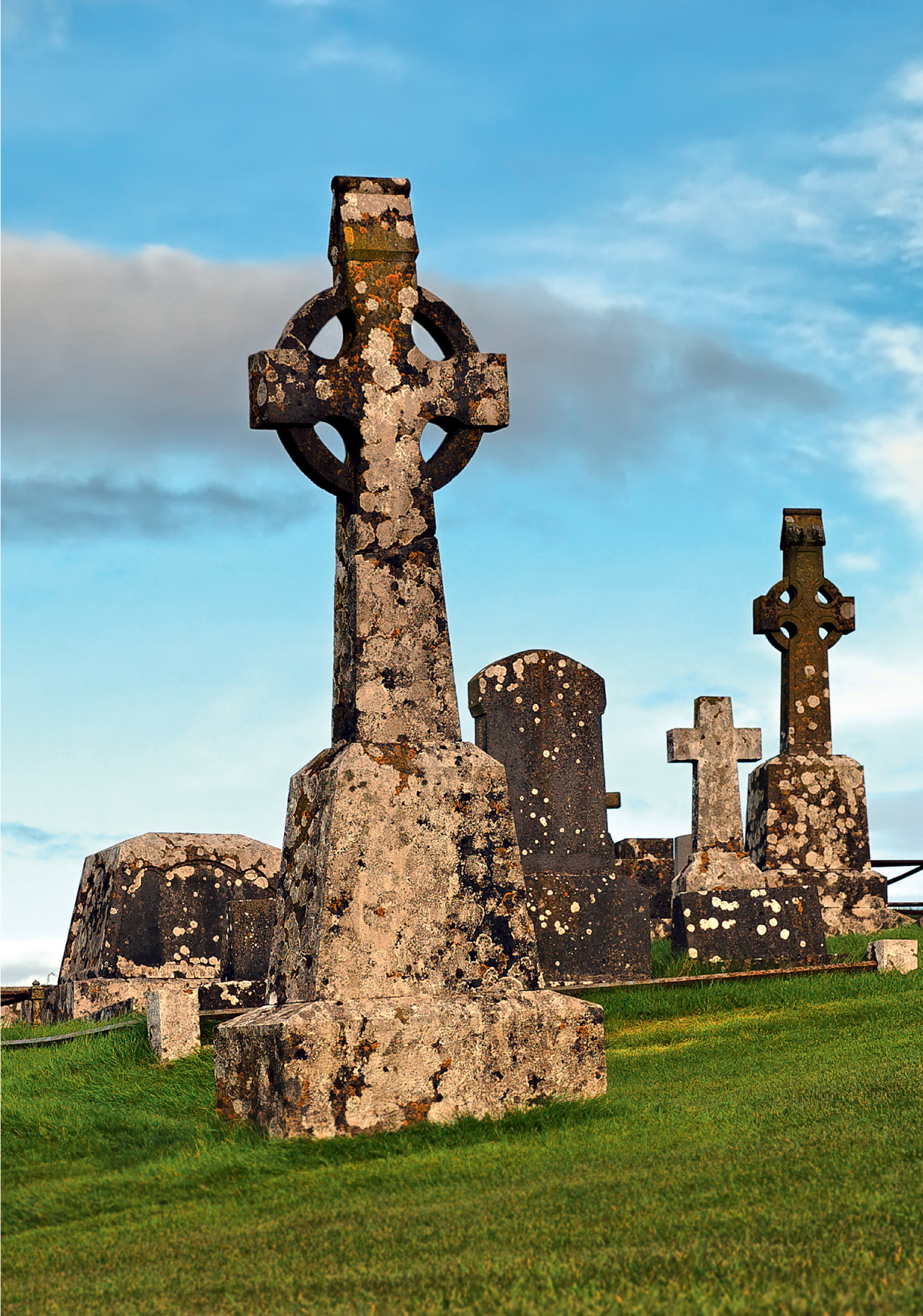
Dún Aonghasa
The great fortress of Dún Aonghasa lies on the sheer cliffs along the south coast of Inis Mór (Inishmore), the largest of the Aran Islands. It was memorably described by the Victorian archaeologist George Petrie as the ‘most magnificent barbaric monument extant in Europe’: it is indeed truly spectacular, and its setting against a panorama of ocean and sky adds to the drama. Dún Aonghasa takes the form of a series of concentric stone walls which end on the cliff edge: it is assumed these walls originally enclosed a circular space, but the remainder of the site has collapsed over the centuries into the Atlantic. The fortress was built and rebuilt over the aeons, but it is thought that the first stronghold on this site dates from approximately 1100 BC. Although much of its history is lost, one can surmise that the site grew in size and complexity over the years. For example, the so-called cheval de frise – the dense fields of jagged rocks placed deliberately around the site – demonstrates the importance of Dún Aonghasa as a place of defence, and speaks eloquently of an otherwise shadowed prehistory of war, attack, and defence scored onto the landscape of modern Ireland.
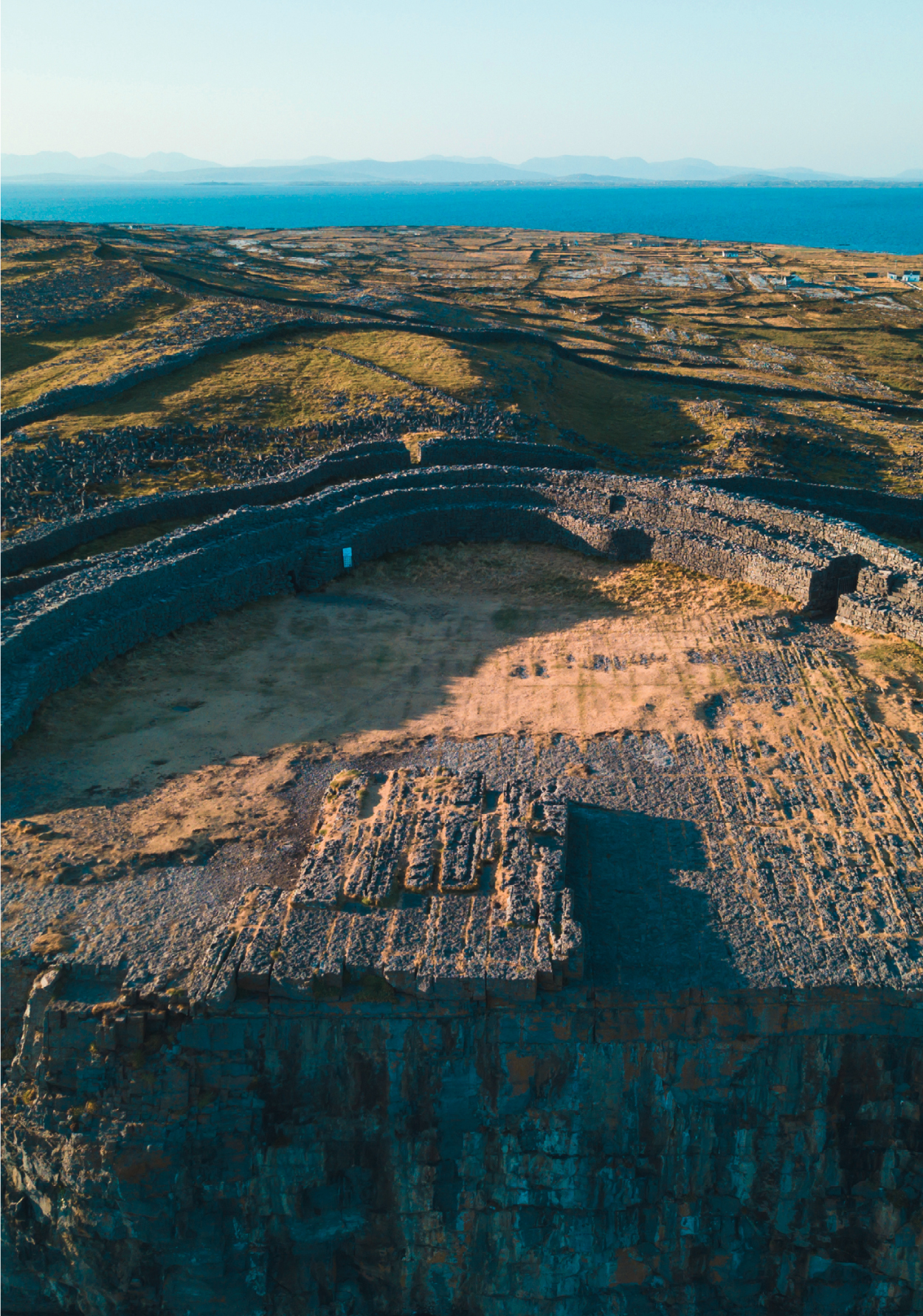
The Broighter Hoard
Ancient Ireland was a place of conflict and struggle, but it was also characterized by intense artistry and creativity. The National Gallery of Ireland’s collection provides evidence of this creativity in the form of an immense treasury of Irish gold: jewellery, sheet gold, lunulae and torcs (golden collars or rings), bracelets and earrings – much of it highly and cleverly decorated. Gold was panned from the rivers of Ireland, particularly those flowing from the uplands where seams were known to exist, such as the Wicklow Mountains in Leinster and the Sperrin Mountains in Ulster. Much of this worked gold was buried, plundered, or dispersed over the years – and uncovered by accident. One startling find was the Broighter Hoard, revealed in 1896 by a farmer ploughing his fields on the edge of Lough Foyle in County Derry. He discovered a wooden box filled with gold from the first century BC, including the Broighter Torc and other ornaments, plus the Broighter Boat, fragile but intact and fashioned exquisitely. The hoard is speculated to have been a votive offering to the sea god Manannán Mac Lir, and sunk into what had been the ancient sea-bed.
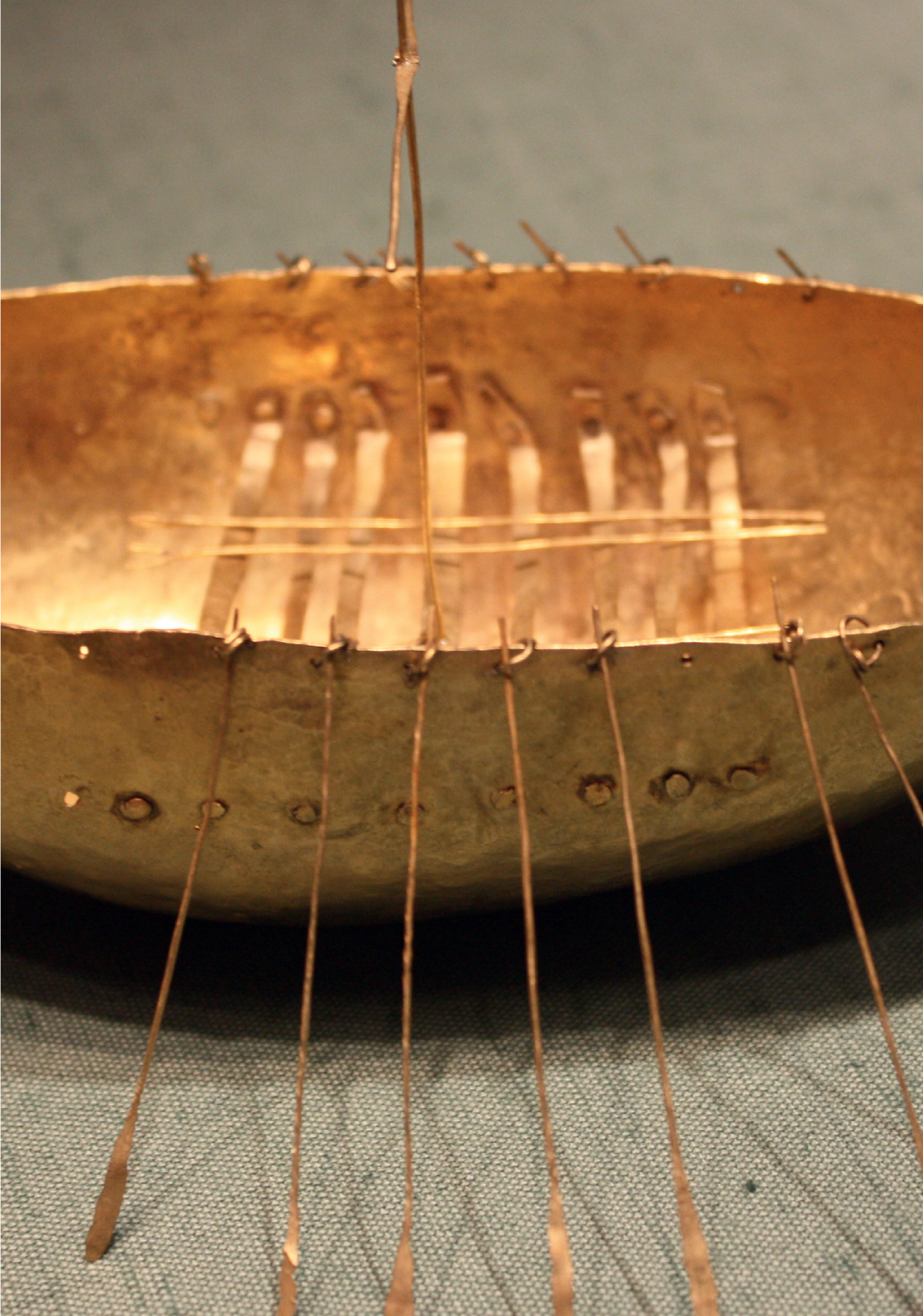

Hibernia and Rome
By the third century BC, classical maps featured Ierne, an island on the edge of the world, and by the beginning of the first millennium, Ierne was the Roman Hibernia: land of winter. Yet Ireland was not on the margins of knowledge – on the contrary: trading routes encompassed the shores of the Atlantic islands, and Ireland exported animal skins, cattle, butter, and wolfhounds. The Romans, then, had a good working knowledge of Ireland, but there was no great incentive to conquer the island. Hibernia was – more or less – manageable from afar, despite the occasional raids by Irish pirates and slavers on the western coasts of the new Roman province of Britannia. History glimpses only one moment when the Romans contemplated an invasion of Ireland: in AD 82, Tacitus speaks of an Irish prince who travelled to Britannia to enlist the military assistance of the Roman general Agricola in resolving a dispute at home. Agricola maintained a fleet in south-west Scotland, from where the coasts of Hibernia were clearly visible – but his attention was diverted by a Scottish uprising. Roman legions would never cross the sea to Ireland.

Before Christianity
The prince who had enlisted the assistance of Agricola was one of many such leaders, for Ireland at this time was divided into a series of kingdoms or túatha, the borders of which fluctuated ceaselessly. The túatha did from time to time federate into larger entities, but these too were subject to continual change. Even the five historic provinces of Ulster, Munster, Leinster, Connacht, and Meath were by no means constant fixtures on the political scene. There was certainly no conception of a centralized state, and yet there was the sense of a collective identity. Significantly, the Irish word for a province was cúige, meaning a fifth, thus implying the presence or existence of a whole. In social and economic terms, these were intensely hierarchical societies: power flowed from the king through the scribes and poets – whose influence in an oral culture was considerable – down to the landless serfs. Laws were pervasive and byzantine, governing every aspect of life, and so, in spite of political turmoil and competition, life in Ireland was inherently deeply stable and organized. This was a society in which each individual knew their place.
Palladius: the ‘first Patrick’
By the second half of the fourth century AD, a small but established Christian community was in existence in Ireland. It was focused in the south-eastern corner of the country: that part of the island most in contact with the ebb and flow of power and culture in the Roman world, and with the doctrinal disputes that regularly convulsed early Christendom. Indeed, it was to ensure the doctrinal purity of Ireland’s Christian community that Celestine I, Pope from 422–432, dispatched the first envoy to Ireland. As the historian Prosper of Aquitaine put it: ‘To the Irish believing in Christ, Palladius, having been ordained by Pope Celestine, is sent as first bishop.’ Palladius landed with a small group of companions on the coast of what is now County Wicklow around AD 428, and ministered largely in this part of the country. But Palladius’ sojourn was brief: he was unable to navigate the mazes of Irish political life, fell out of favour with local Irish kings – and within three years had departed Ireland for Scotland. Though remembered in local folk culture, Palladius and his legacy have been almost entirely erased from official Irish histories.


